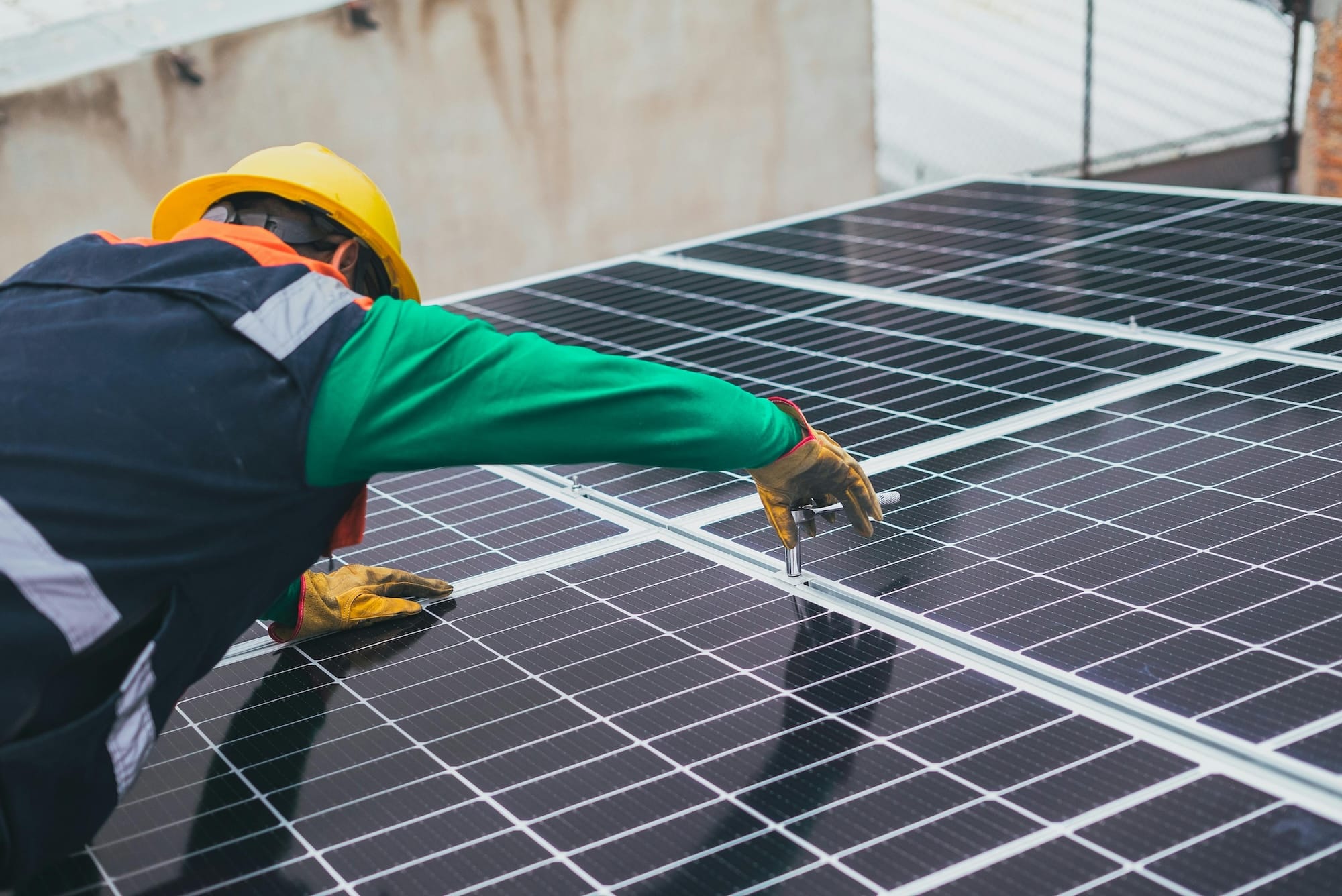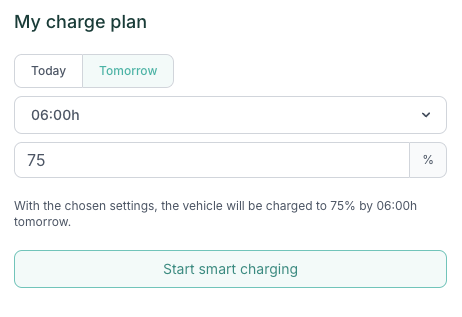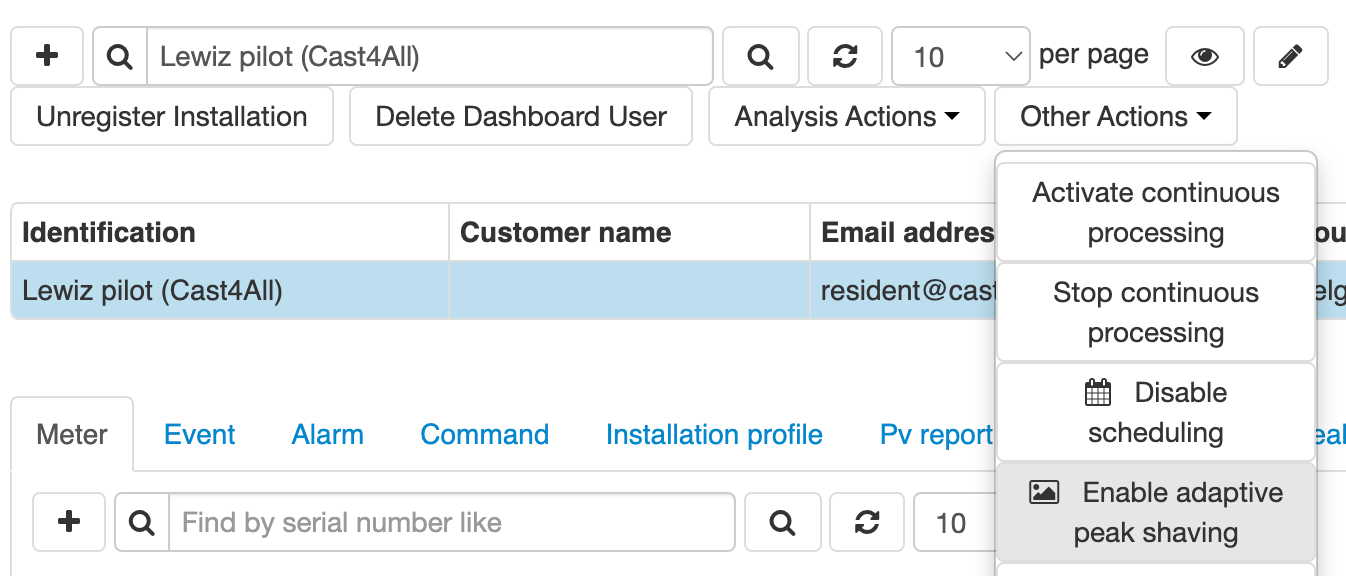This release contains a major security upgrade behind the scenes of our platform. There are no changes to functionality in this update.
Product Updates
Highlights
Increased value alarm
Our platform's flexibility in defining alarms based on measured data has been enhanced. Previously, alarms were triggered by setting upper and lower thresholds for monitored values, such as ensuring the battery state of charge stays between 20% and 100%. An alarm would be generated if the value exceeded these boundaries.
Now, we've added the ability to define alarms based on increased values. For instance, certain meters track events such as voltage exceeding 253V with a counter. With this update, our system can trigger an alarm whenever the counter increments, enabling proactive monitoring for such conditions.
CSPI value export
Our Clear Sky Performance Index is one of the best PV panel degradation detection systems on the market. In addition to alerts and API access for CSPI values, users can now export these values as a CSV file for easier analysis and reporting.
Other improvements
- Our Cloud EMS is getting more robust and now has a fallback mechanism for when forecast values are not available yet.
- Verifying the connection between a gateway (Communicator) and a modbus device is essential to know if the device is successfully installed. When 2 modbus devices are used to monitor a heat-pump (e.g. indoor / outdoor), we will show you both modbus addresses.
API Updates
Battery API's
- New endpoint
/batterieswhere you can query all batteries - New endpoint
/batteries/{batteryId}where you can get info of a specific battery - New endpoint
/batteries/{batteryId}/setChargePowerto instruct the battery to charge or discharge- Value in Watt
- Positive value = charge, negative value = discharge
Inverter API's
- New endpoint
/inverterswhere you can query all inverters - New endpoint
/inverters/{inverterId}where you can get info of a specific inverter - New endpoint
/inverters/{inverterId}/limitProductionto curtail the inverter- Value in %
HVAS API's
- New endpoint
/hvacswhere you can query all HVAC devices - New endpoint
/hvacs/{hvacId}where you can get info of a specific HVAC device - New endpoint
/hvacs/{hvacId}/setCoolTemperatureto set the cool temperature- Value in degrees celcius
- New endpoint
/hvacs/{hvacId}/setHeatTemperatureto set the cool temperature- Value in degrees celcius
Highlights
Smart EV Charging
In line with the recent dashboard update, we’ve made significant improvements to our Smart EV Charging product for enhanced reliability. Previously, we used the car's location to decide whether to start cost-optimized charging. While this approach ensured user comfort, it was often unreliable due to delays in location updates.
Now, car owners can manually activate smart charging directly from the app. This change provides immediate feedback on charging schedules and costs, giving users more control and clarity.
Additionally, we’ve revamped the car-connection flow to deliver a smoother mobile experience.

Flexibility
Our platform is evolving to calculate the flexibility of a portfolio of installations and expose an API endpoint to act on this flexibility. While you might notice early actions around this feature, more updates are on the way—stay tuned!
Other improvements
- Alarms can now be assigned to users in bulk for greater efficiency.
- The gateway registration process has been adjusted to allow registration of gateways even without prior configuration, improving ease of use.
- We resolved an issue where batteries controlled by Lewiz weren’t adhering to instructions from the Cloud EMS. Now, we send the installer-provided
batteryPowerparameter to the BMS controller, ensuring full capacity utilization. - Due to a firmware issue in the latest Lewiz update, we have temporarily disabled curtailment commands for devices reliant on the Cloud EMS.
- Our Cloud EMS now logs when a user disables automatic scheduling. This ensures we can track and replicate any unusual behavior effectively.
- Behind-the-scenes preparations for a major platform design overhaul in 2025.
API Updates
ControlSignal APIs
- New endpoint
/controlsignalswhere you can check on the status of all ControlSignals given to a meter - New endpoint
/controlsignals/{controlSignalId}where you can check on the status of a specific ControlSignal - New endpoint
/controlsignals/{controlSignalId}/cancelto cancel a ControlSignal - New endpoint
/controltypesto see all possible controls a ControlSignal can represent
Flexibility APIs
These endpoints will later be used to see the offer of flexibility for a portfolio of installations. A new request can be made to act on that flexibility.
- New endpoint
/flexibilityoffers - New endpoint
/flexibilityoffers/{flexibilityOfferId} - New endpoint
/flexibilityrequests - New endpoint
/flexibilityrequests/{flexibilityRequestId}
We’ve enhanced our Smart EV Charging product to improve usability and provide greater control. Previously, the system relied on location-based functionality, which often lacked accuracy due to unreliable car location services.
With this update, Smart EV Charging now operates on a push-based system. Users can initiate Smart EV Charging directly from the app, offering immediate feedback on charging schedule and costs.
This new approach not only ensures more accurate operation but also empowers users with greater flexibility and transparency.

We've reworked a couple of settings to make sure the end user is in full control of the HEMS.
- The slider for Advanced EV Charging now dynamically calculates the minimum power required based on the EV charger's settings. For 3-phase chargers that cannot charge on a single phase, the slider will automatically prevent setting a 1.4kW power level.
- Users can now activate adaptive peak shaving directly in the peak shaving settings. This feature will only be activated upon request to support@cast4all.com.

We've combined the DatePicker and ArrowDatePicker components into one so the user can easily navigate between dates by either selecting a specific date, or using the arrows to jump between dates.

Platform v9.8
Adaptive peak shaving, Virtual meters, and other improvements
Highlights
Adaptive peak shaving
The platform now supports Adaptive Peak Shaving for Lewiz devices. Previously, users could only set a fixed maximum grid offtake target for peak-shaving applications. If household demand exceeded this target, the peak for the month remained unchanged. With Adaptive Peak Shaving, the system can now automatically adjust the target peak dynamically when high household demand occurs, ensuring more effective peak-shaving throughout the month.
To activate this feature, search for an installation and use the button Other Actions -> Enable adaptive peak shaving. This feature will also come to our dashboard so the end-users can choose to activate or deactivate this feature themselves.

Virtual meters
After months of experimentation, Virtual Meters are now ready for broader deployment. These meters calculate values derived from measured data, such as combining grid consumption, battery offtake, and PV production to determine total household consumption.
What’s New?
- Single Virtual Meter per Installation: Each installation now supports only one Virtual Meter. This change centralizes all calculated measurements, enabling dependencies between calculations to be resolved simultaneously and more efficiently.
- Dedicated Calculations Engine: A new, modular calculations engine has been introduced, allowing us to seamlessly add and manage additional calculated values as the system evolves.
What's next?
- Dashboard Improvements: The dashboard currently shows savings based on Virtual Meters, while self-consumption and total consumption are calculated on the fly, leading to occasional inconsistencies. To improve reliability and performance, the dashboard will transition to using the new calculations engine for all metrics, including self-consumption and total consumption.
- Extended EMS Savings calculations: EMS savings will be enhanced to account for actions taken by the Cloud EMS. This will provide a more comprehensive and accurate view of the savings achieved through automated energy management.
Other improvements
- Day-ahead prices (Belpex, APX) are now collected with an additional validation step to ensure all prices for the upcoming day are available. This enhancement guarantees the reliability of our Cloud EMS, even when price data is incomplete or delayed.
- The Cloud EMS now fully accommodates Daylight Savings Time changes. On DST transition days, the system adjusts to plan for the appropriate number of hours instead of assuming a fixed 24-hour schedule.
- A broad range of edge cases related to Smart EV Charging are now automatically tested and validated, ensuring improved reliability and robustness.
- Alarms will now be triggered for API Gateways (Fluvius and SolarEdge) in case of authorization errors. These alarms provide clear insights into issues with external API providers, facilitating faster troubleshooting.
- Addressed an issue where signal strength was missing during initial faulty SIM connections in Lewiz, causing unexplained connection test failures. The system now explicitly identifies and reports the underlying cause, improving diagnostics.
API Updates
This version does not introduce changes to the API.
